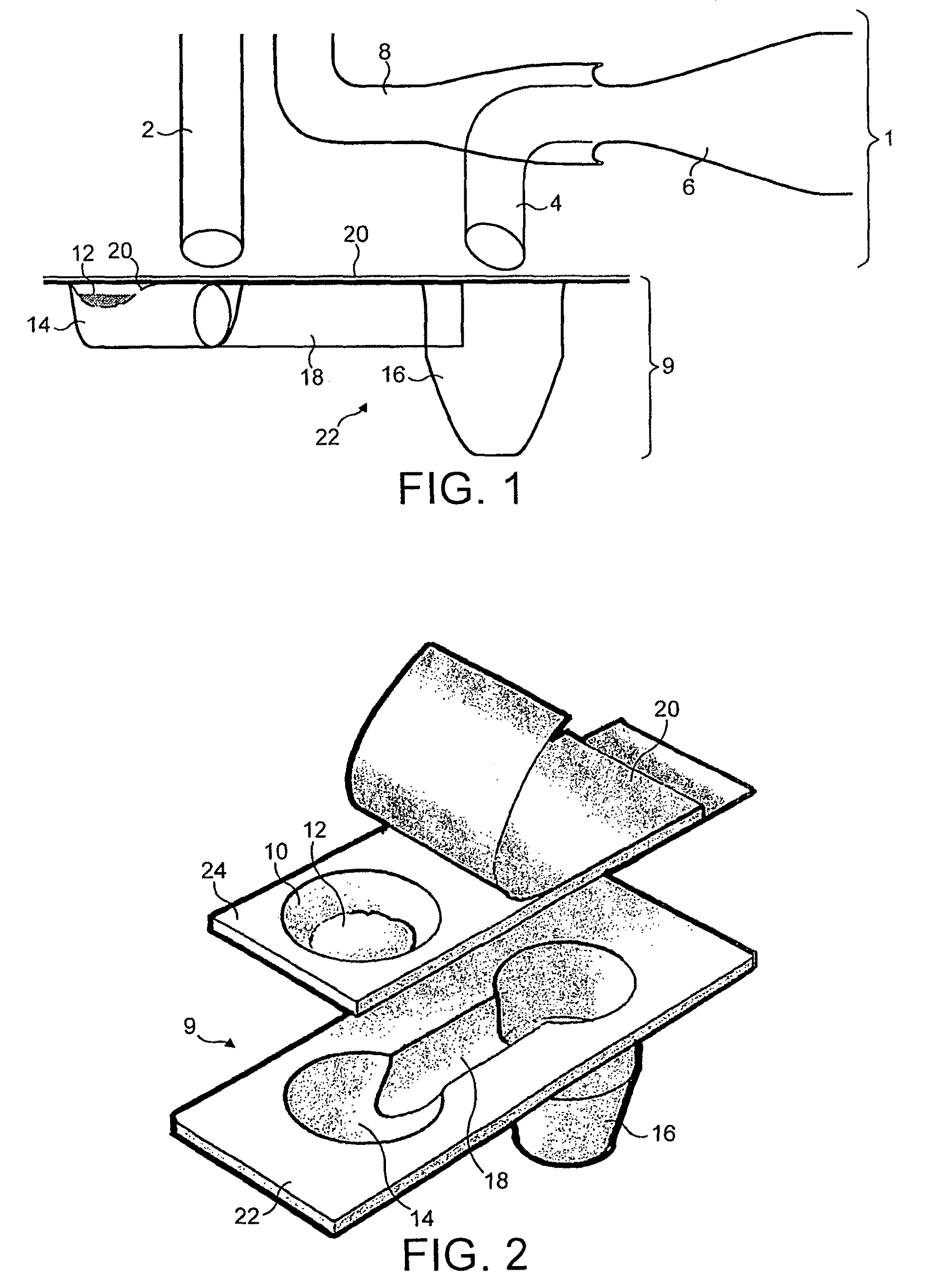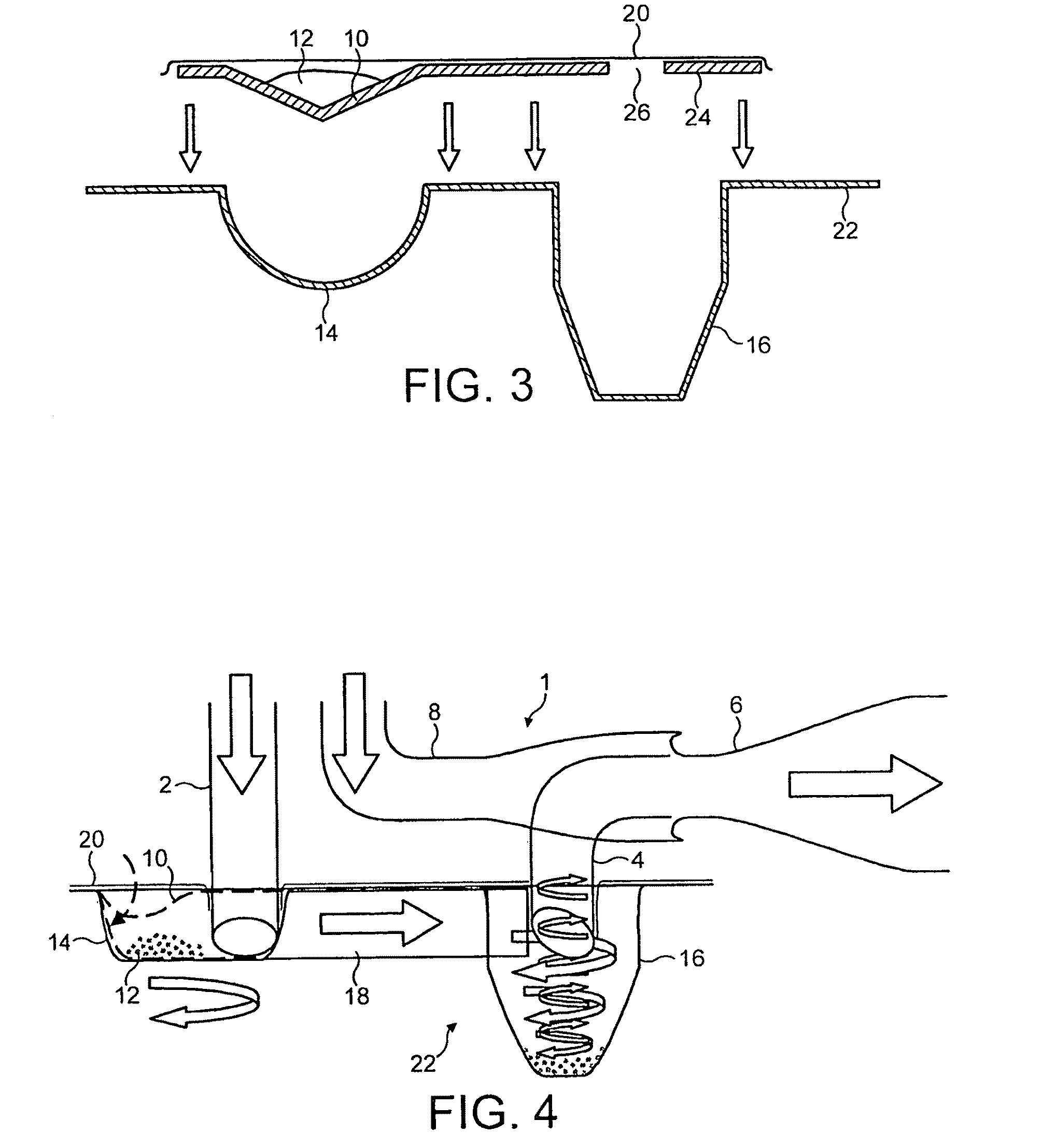Dry powder inhalers
a technology of dry powder and inhaler, which is applied in the field of inhalers, can solve the problems of inconsistent performance, ineffective de-aggregation of drug particles, and inability to de-aggregate respirable particles, so as to enhance the chamber performance, enhance the protection against moisture and contamination, and improve the effect of performan
- Summary
- Abstract
- Description
- Claims
- Application Information
AI Technical Summary
Benefits of technology
Problems solved by technology
Method used
Image
Examples
examples
[0080]FIG. 8 shows five different cyclone chamber configurations A-E used in a performance test. The cyclone chamber diameters range from 10 to 20 mm. FIG. 9 shows the performance test results for the cyclones A-E compared to two conventional dry powder inhalers. The fine particle fraction achieved using the cyclones A-E is seen to be over 69%, and as much as 81%, compared to only 30-40% for conventional dry powder inhalers. This results from the deposition of large particles above the cut-off size in the base of the cyclone chamber, so that the fine particle fraction is greatly enhanced. The size of the particles separated by the cyclones A-E was also reduced to 2-3 μm in all configurations. Thus cyclone chambers of these configurations separate out particles of a much finer, respirable size than can be achieved by conventional dry powder inhalers, therefore concentration of fine particles in the emitted dose is increased compared to the conventional formulation.
[0081]FIG. 10 shows...
PUM
 Login to View More
Login to View More Abstract
Description
Claims
Application Information
 Login to View More
Login to View More - R&D
- Intellectual Property
- Life Sciences
- Materials
- Tech Scout
- Unparalleled Data Quality
- Higher Quality Content
- 60% Fewer Hallucinations
Browse by: Latest US Patents, China's latest patents, Technical Efficacy Thesaurus, Application Domain, Technology Topic, Popular Technical Reports.
© 2025 PatSnap. All rights reserved.Legal|Privacy policy|Modern Slavery Act Transparency Statement|Sitemap|About US| Contact US: help@patsnap.com



